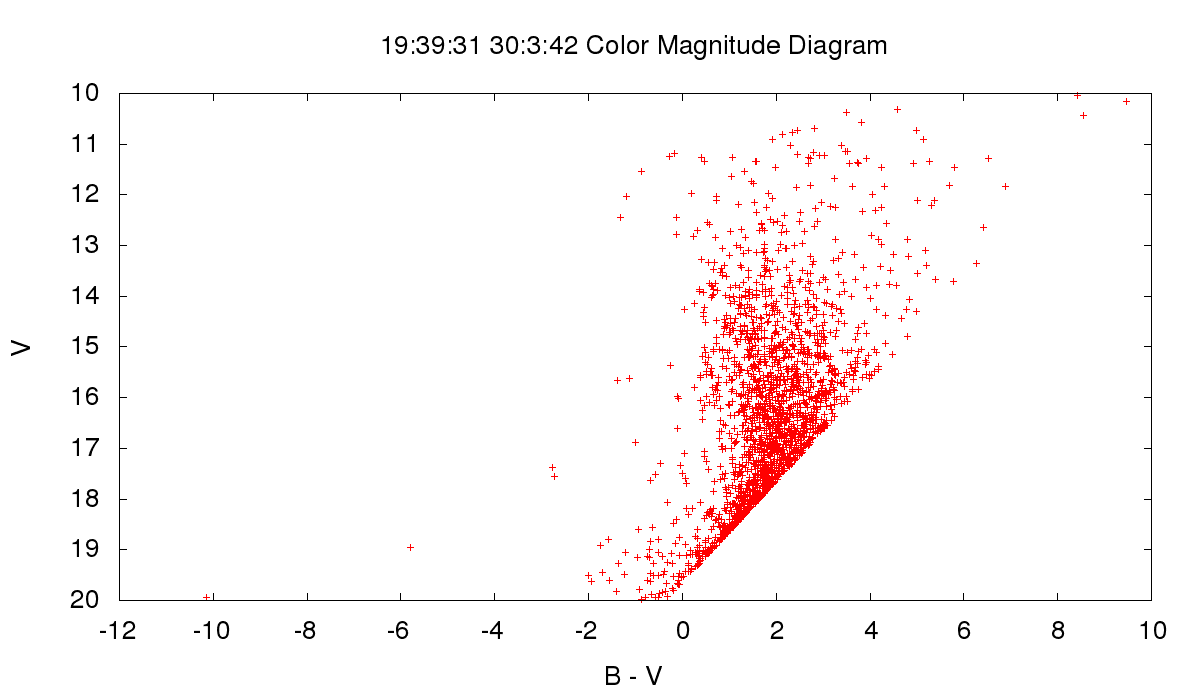
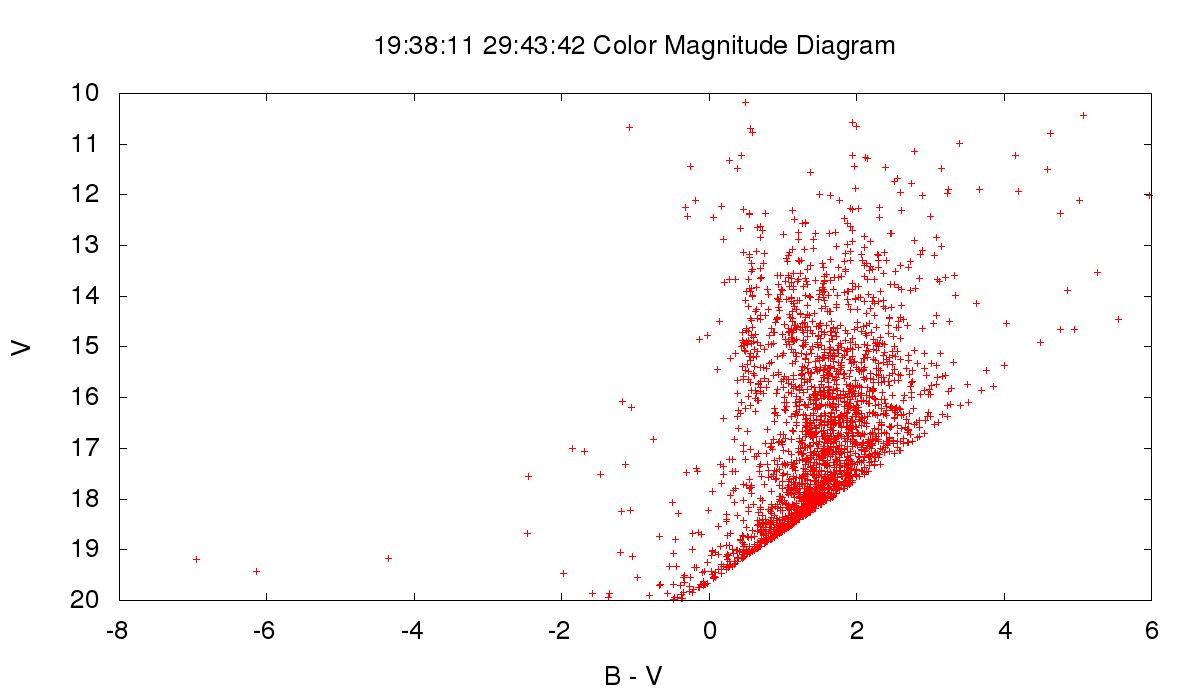
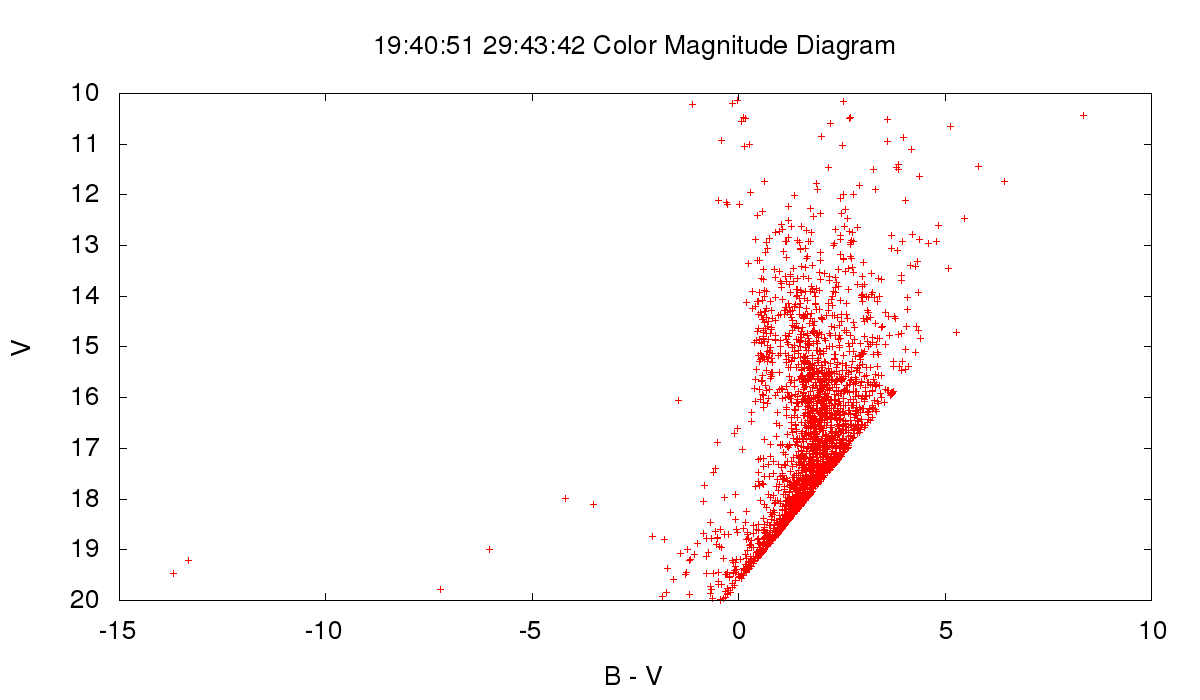
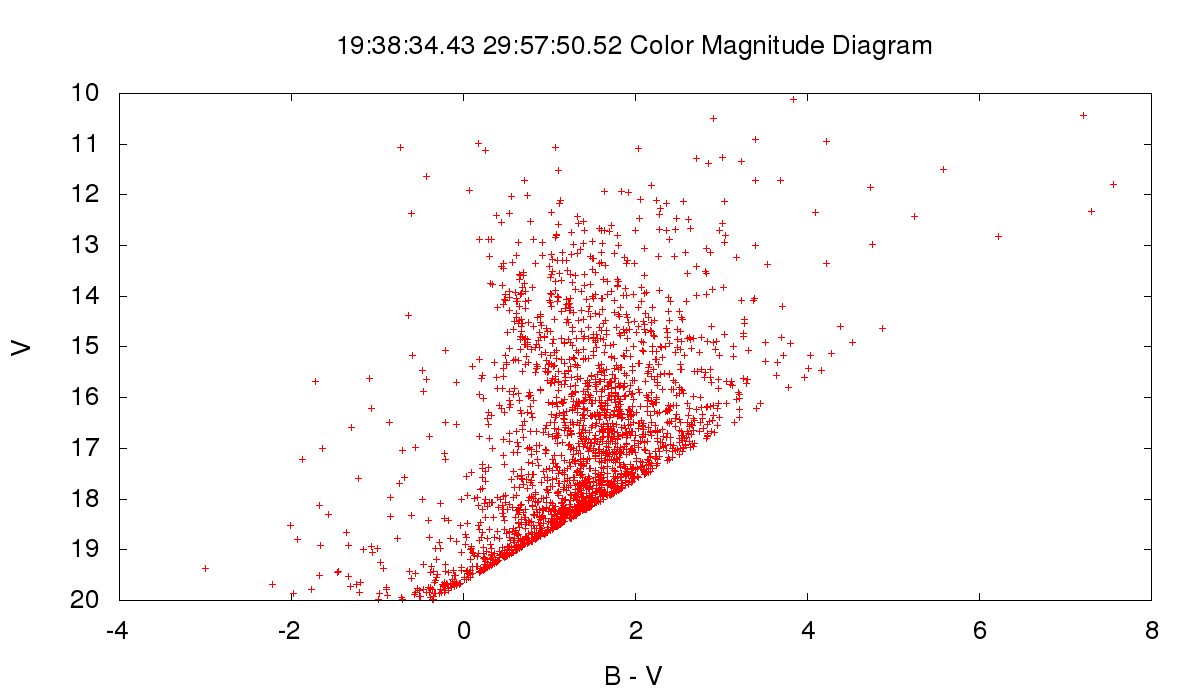
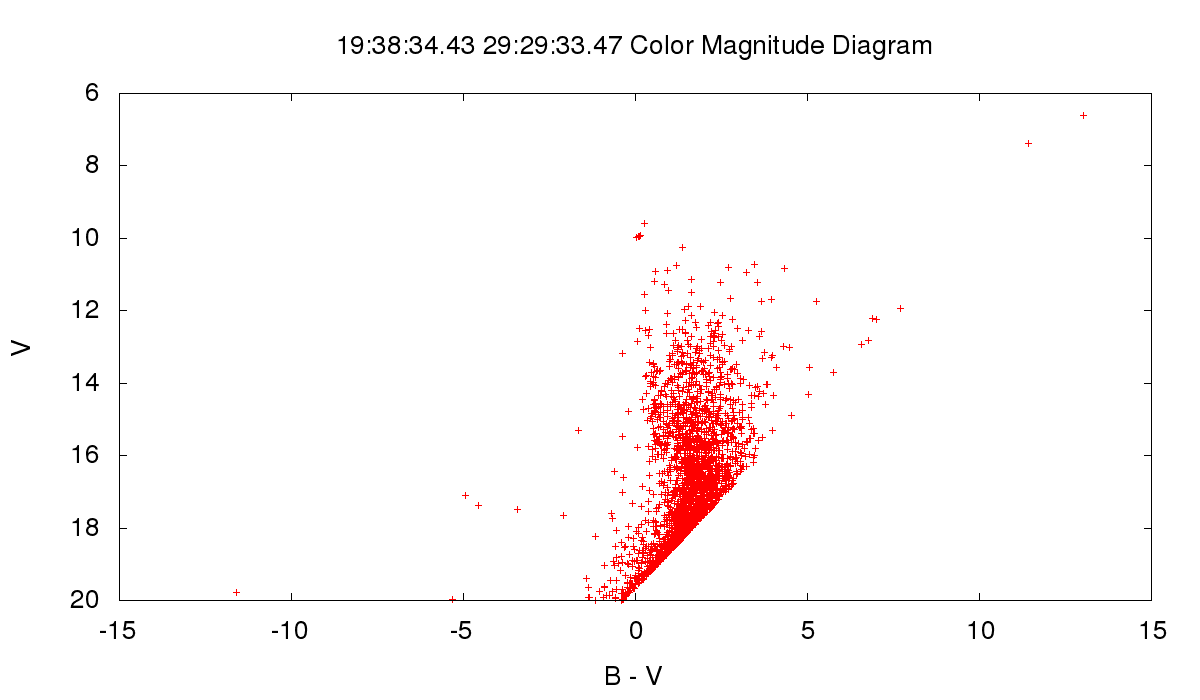
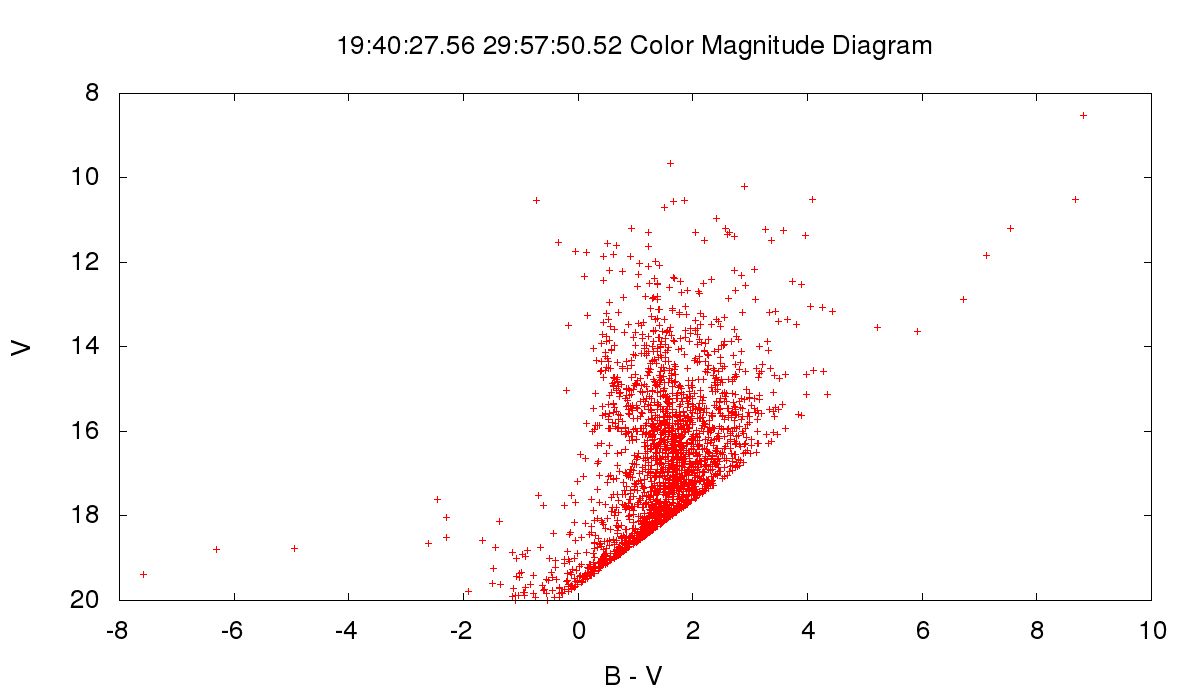
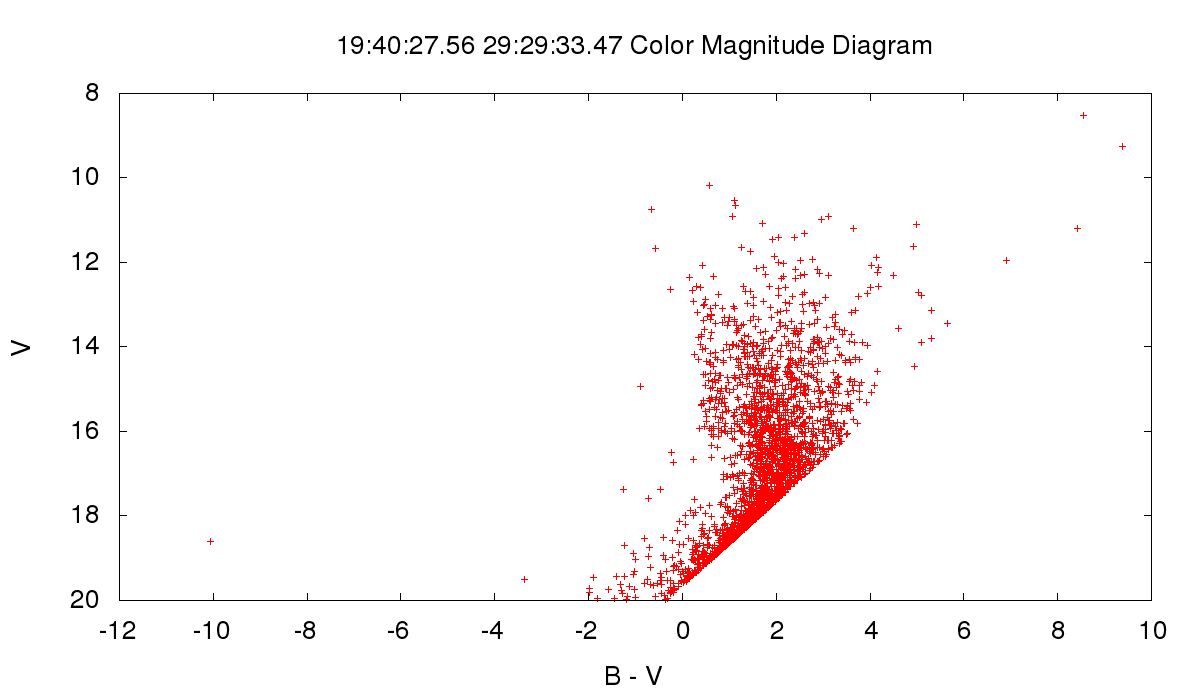
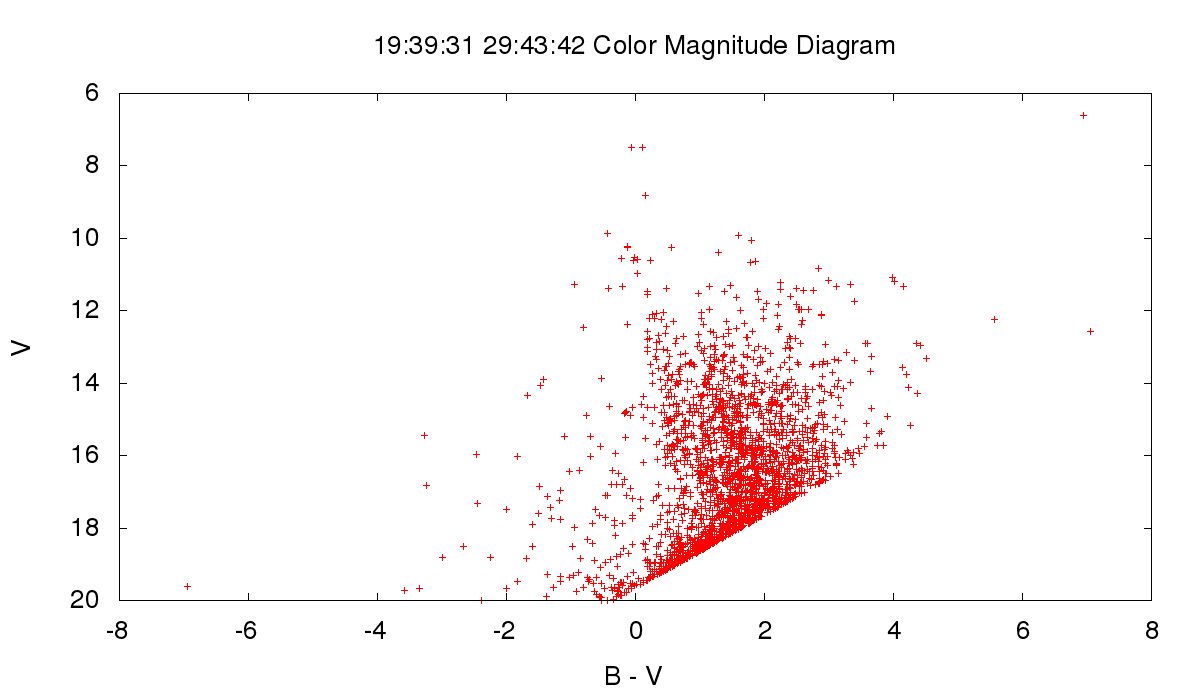
Little Tycho Observatory
703 McNeill Road, Silver Spring, Md 20910
rkk_529@hotmail.com
The loose grouping of stars at 19:39:31 29:43:42 (J2000) have similar proper motions. We show that this despite this, it is unlikely the group is a true cluster, as 8 nearby areas near this location have similar characteristics.
A group of stars that form a cluster should have a color magnitude diagram that shows its main sequence members, giants, and a turnoff point. The cluster member should also have proper motions that are similar, and more alike than those in nearby regions. As the brighter stars within 5 arc minutes of 19:39:31 29:43:42, J2000 (hereafter called "the center ") have similar proper motions, a study was done to determine if they did indeed comprise a loose cluster or moving group. It should be noted that the candidate cluster seemed to lie with 5' of the center, based on a visual examination of its DSS image as rendered by the Aladin1, tool:
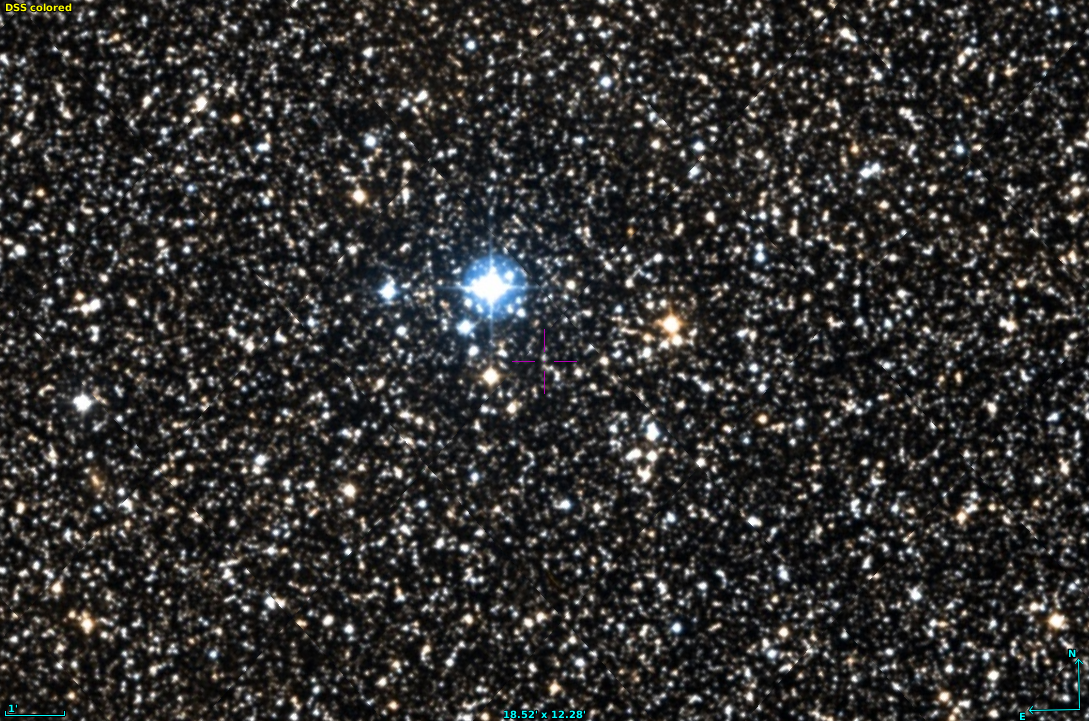
Using the data from the PPMXL2, Tycho3, UCAC44, and URAT15 catalogs, stars within 30' of the candidate cluster location were extracted from the catalogs. To be included in the study, a star needed to have:
Using these criteria, each catalog yielded:
As the PPMXL stars dominated this sample, all of these stars were used for this study, as the PPMXL stars would dominate.
The proper motions in both right ascension and declination of stars within 5' of the center were averaged, and standard deviations calculated. This was also done on 8 areas 5' in radius centered on the center, but 20' from it. Each region is 45° from its neighbor. The results are shown in the table below.
| Area Center, J2000 Coordinates | Number of stars | Mean Proper Motion in Ra | 1 σ of Proper Motion in Ra |
Mean Proper Motion in Dec |
1 σ of Proper Motion in Dec |
| 19:39:31 30:3:42 | 2049 | -5.9761 | 73.389 | -6.4627 | 81.128 |
| 19:40:27.56 29:57:50.52 | 2216 | -6.2211 | 68.774 | -8.1652 | 75.041 |
| 19:40:51 29:43:42 | 2217 | -4.696 | 66.371 | -6.2675 | 60.547 |
| 19:40:27.56 29:29:33.47 | 2306 | -5.1444 | 57.493 | -5.7246 | 59.446 |
| 19:39:31 29:23:42 | 2343 | -3.6978 | 47.929 | -2.9872 | 57.649 |
| 19:38:34.43 29:29:33.47 | 2293 | -4.8674 | 60.594 | -4.4453 | 68.172 |
| 19:38:11 29:43:42 | 2299 | -3.3084 | 54.13 | -5.7229 | 61.622 |
| 19:38:34.43 29:57:50.52 | 2208 | -5.1182 | 57.237 | -5.4669 | 69.393 |
| 19:39:31 29:43:42 | 2239 | -4.9326 | 58.024 | -4.4895 | 64.746 |
Note the last entry in the table is for the candidate cluster itself. It's entries are not markedly different from the 8 others. Based on proper motion alone, this does not indicate that the candidate cluster is, in fact, a cluster.
The color magnitude diagrams (CMD) tell a similar story. Below are the 8 CMDs that surround the candidate:








The candidate cluster's CMD:

They are far more similar than different. Due to the varied amount of interstellar reddening, the charastic zones of main sequence and giant branches are not seen in these CMDs. Using them to estimate age and metallicity is not feasable.
It should be noted that this area of the Milky Way is well populated with stars, interstellar dust, and gas. As the above data is well contaminated with faint background stars that could swamp any indication of a cluster, the study was redone with a cutoff magnitude of 12. The proper motions for this:
| Area Center, J2000 Coordinates | Number of stars | Mean Proper Motion in Ra | 1 σ of Proper Motion in Ra |
Mean Proper Motion in Dec |
1 σ of Proper Motion in Dec |
| 19:39:31 30:3:42 | 55 | -13.655 | 56.768 | -0.2 | 92.168 |
| 19:40:27.56 29:57:50.52 | 33 | -26.242 | 94.086 | -10.242 | 138.65 |
| 19:40:51 29:43:42 | 36 | -5.5 | 40.61 | -4.6667 | 25.018 |
| 19:40:27.56 29:29:33.47 | 26 | -4.2308 | 77.383 | -0.96154 | 43.844 |
| 19:39:31 29:23:42 | 33 | -14.424 | 55.767 | 2.6061 | 96.683 |
| 19:38:34.43 29:29:33.47 | 30 | 13.167 | 42.529 | -9.4 | 58.214 |
| 19:38:11 29:43:42 | 32 | 0.4375 | 44.615 | -12.594 | 80.257 |
| 19:38:34.43 29:57:50.52 | 27 | -20 | 70.73 | 8.3704 | 86.349 |
| 19:39:31 29:43:42 | 57 | 1.8947 | 47.532 | -6.5263 | 54.119 |
Again, the last entry in the table is for the candidate cluster itself. It's entries are not markedly different from the 8 others. Based on proper motion alone, this does not indicate that the candidate cluster is, in fact, a cluster.
The CMDs:

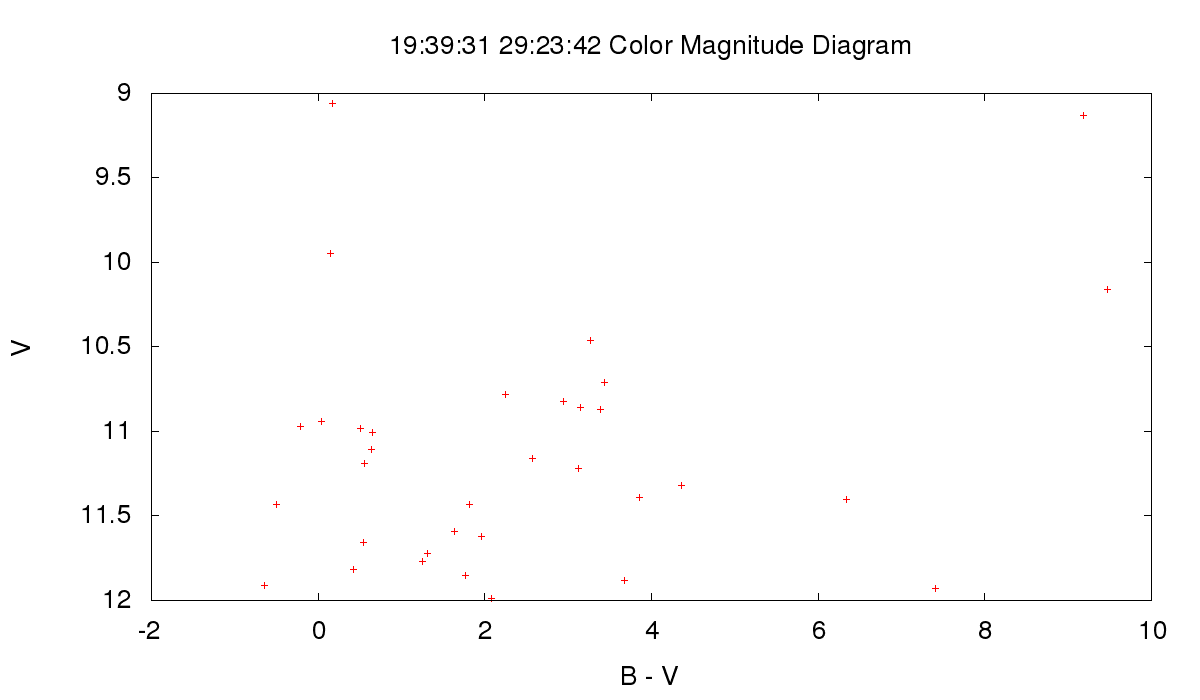






The candidate cluster's CMD:

As in the study where the limiting magnitude was 20mv, these CMDs are far more similar than different.